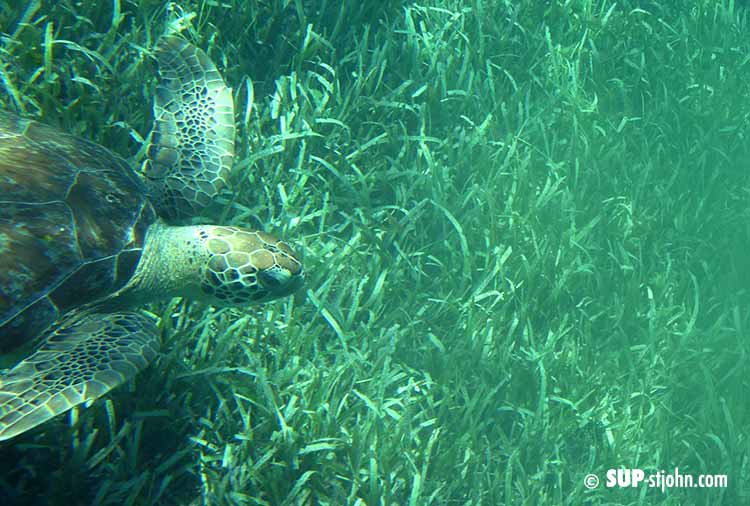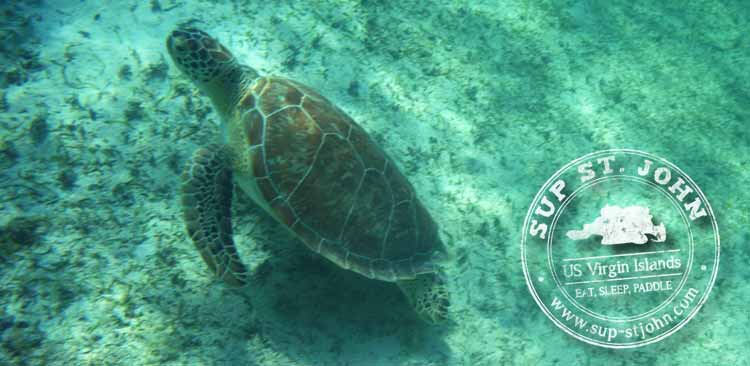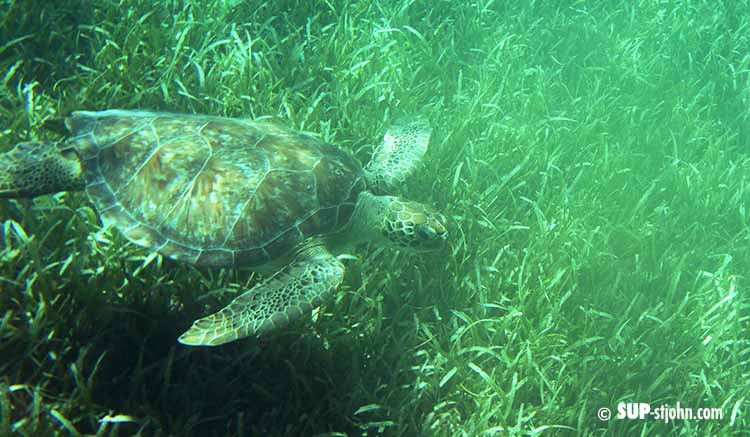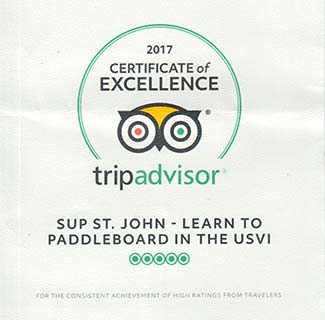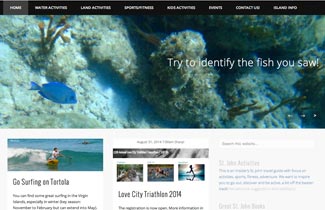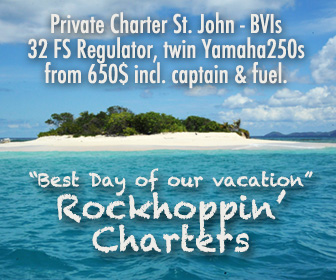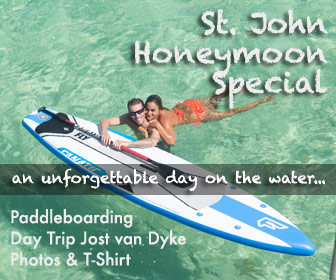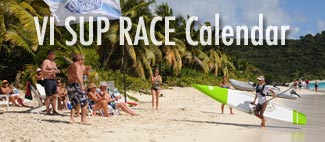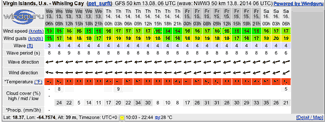A paddleboard is perfect for spotting Sea Turtles
Due to the elevated view, you will see everything. One of our customers just wrote us the following email:
“Paddleboard worked out great for the week – just right for me. I told my husband I need to retire and become a professional turtle-spotter for the snorkelers! I could see EVERYTHING up high like that – so cool!
Fell in love with everything about St. John and I’m sure we will be back. Thanks for the board and the great service.”
Different kinds of Sea Turtles on St. John
There are 3 different kinds of Sea Turtles on St. John or the Virgin Islands in general: Leatherback, Green Turtle and Hawksbill. Head over to the National Park’s website for some sea turtle photos. You usally see Green Turtles in those places with sea grass beds (like Maho and Francis) and Hawksbill around reefs (e.g. Scott and Turtle Bay). The Leatherback turtles are the largest species of sea turtle, weighing on average 600-800 pounds but are unfortunately almost extinct and can rarely be seen.
Sea Turtles – Endangered Species
Please respect nature and do not touch them! It’s illegal to harm, touch, or harass a Sea Turtle. You can be fined up to $10,000 and put in jail if you harm a sea turtle! All 3 kinds of Sea Turtles listed above are federally endangered species. Development of beaches has taken their nesting places away an too much fishing and the exploitation of hawksbills for tortoise shell products like combs, hair clips, eyeglasses etc. have taken their toll on a once thriving population. Do not buy products made of tortoise shell! For more information on efforts to preserve them, head over to Wimarcs.org. Please consider making a donation to support their work!
Where to find Sea Turtles
Chances are, you can find Sea Turtles pretty much everywhere you go and with a paddleboard they are much easier to spot than when swimming. However, there are some spots where there seems to be a guarantee to see them: Scott Beach and, you name it, Turtle Bay, both part of the Caneel Bay Resort. Access is limited to arrival by sea (so you can rent a paddleboard or dinghy to get there). The Resort asks that you respect the privacy of guests and do not use resort beach chairs, towels and facilities. For a Caneel Bay map click here. You can swim from Scott Bay to Turtle Bay, but it can be hard with current and waves crashing against the rocks, so take care! You are also very likely to see sea turtles at Hawksnest, Maho (over the grassy area), Francis, Waterlemon Cay or Salt Pond (between the boat morrings).
Sea turtles are air breathers, just like us, they hold their breath, dive down and then come back up again to get air. When you are paddleboarding, chances are that a Sea Turtle will randomly pop up right in front of you, look at you and then quickly dive down again. You should be able to follow it with your board. Try to find places with “turtle grass” (which looks like lettuce). Swim/paddle out on the ends (near the rocks) of any beach and then back to the middle. I have seen most sea turtles about 100-400 yards from shore in a depth of about 15 feet, kind of where the swimming areas usually end. It was mostly either early in the morning or the afternoon, supposedly because the beaches are getting quieter then.
Random Sea Turtle Facts
- Sea Turtles are air breathers just like us. if they are caught in fishing line or in a net, they will drown. Please pick up any stray fishing line, gear or other trash you find in the water or on the beach, it may just save a turtle’s life!
- Sea Turtles don’t have ears but they can hear!
- Incubation of eggs takes 8 weeks. If you are a baby turtle, the odds of survival aren’t good! Only 1 in 1,000 sea turtles survives from hatching to adulthood! Birds, crabs, dogs, mongoose, and fish eat hatchlings. So, when one adult turtle dies, its like having thousands and thousands of hatchlings die. When baby sea turtles getting ready to emerge from their nest, they will gather just below the sand surface and wait for night fall. If you were to drive or walk on the beach before they come out of the nest, you can crush and kill them. Also rubbish and other stuff laying on the beach can block their way.
- Leatherback sea turtles eat jellyfish. They can easily mistake a plastic bag for a jellyfish. If they swallow it, they can suffocate, or starve to death!
No luck seeing them?
Watch a Sea Turtles on St. John Video, taken at Francis Bay instead. Amazing, no?

